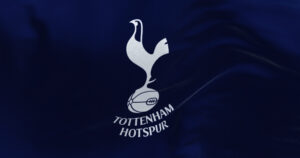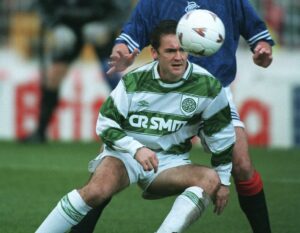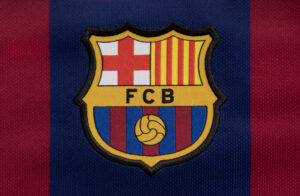England’s World Cup semi-final defeat was a reminder that, as Alan Hansen once put it, whoever controls the midfield usually controls the game. As the more rational and analytical England fans had feared before the game, the superb Croatia midfield trio of Luka Modric, Ivan Rakitic and Ivan Perisic ultimately overwhelmed England’s disjointed combination of Jordan Henderson, Dele Alli and Jesse Lingard.
Indeed, by the end of extra time, England’s midfield appeared to be a one-man midfield of only Henderson against the Croatian trio and, consequently, it was no surprise that Croatia won through to the final. While some have suggested that Gareth Southgate should have done more to reinforce his midfield (presumably by bringing on Eric Dier alongside Henderson), it is unlikely to have been enough. That is because this Croatian midfield is not just the finest at Russia 2018 but one that bears comparison with the finest midfields in World Cup history.
Croatia’s Midfield Is up There with the Best in History
Croatia’s midfield trio are pretty much the perfect midfield, in that they combine the three classic archetypes of a midfielder – the tackler, the passer and the scorer – although all three players are capable of performing each of these roles.
The tackler is Ivan Rakitic, who has now affected the complete midfield transformation from the No.10 he was at Sevilla to the supremely skilful central defensive midfielder that he has become for Barcelona and Croatia. Of course, Rakitic is not really a central-defensive midfielder at all, but rather an attacking midfielder whose timing of passes and anticipation of attacks is so good that he rarely has to make tackles at all, let alone last-ditch ones.
Rakitic had what was probably the most difficult job in modern football, in that he was bought by Barcelona to replace Xavi, who, alongside Andres Iniesta for club and country, was undoubtedly the greatest midfielder of the last fifteen years. Although he initially struggled at the Nou Camp, to the point that during his first season (2014/15) he was widely regarded as the worst foreign buy in Spain, he ended it as a fundamental part of the second Barca team to win the treble of La Liga, Copa del Rey and Champions League. The fact that the immortal Xavi was reduced to a cameo substitute appearance at the end of the Champions League Final against Juventus that season said it all about how Rakitic had successfully filled his boots.
It is doubtful that Luka Modric has ever struggled at at any point in his career, so graceful and effortless is his movement around the pitch. Since the retirement of Xavi and the gradual but inevitable decline of Iniesta, he has quietly, undemonstratively become the greatest midfielder in the world However, such has been Ronaldo’s standing at Real Madrid (at least until his move to Juventus), as well as the more obvious, eye-catching abilities of Gareth Bale and Isco, that it is only now, while playing at the World Cup for his national team, that Modric has really captured the world’s attention.
Indeed, so impressive has Modric been that he is a legitimate contender for player of the tournament, with his only realistic opposition for that title being provided by Kylian Mbappe, France’s enfant terrifique. As a result, it will not only be the World Cup final itself that is decided on Sunday but almost certainly the winner of the Golden Ball, for the outstanding player in Russia.
Finally, there is Ivan Perisic, the third member of Croatia’s holy trinity of midfield players (and if they win the World Cup, they might well be put forward for sainthood by their fellow countrymen and women). Rakitic and Modric, having performed so well and for so long at the two biggest clubs in the world, have long caught the eye, but in his last two international tournaments (Euro 2016 and now Russia 2018) Perisic has shown that he belongs in such stellar company.
Although Rakitic and Modric have both scored in Russia, there is no doubt that Perisic is the most attack-minded of the three. In fact, he is as much a winger/wide attacker as he is a conventional midfielder. Against England, he again showed his ability not just to score but to score crucial goals, as he got the equaliser that took Croatia into extra time.
Of course, it must be said that like the very best midfields, Croatia have the back-up in the squad and on the bench if they need it. In particular, they have Marcelo Brozovic, Perisic’s club team-mate at Inter and arguably the breakthrough midfielder of Russia 2018. He is more obviously a defensive or holding midfielder than his three compatriots, but crucially he also combines classic technique with what is fast becoming the classic Croatian characteristic of hard work.
So, having defeated England, can Croatia and their much-vaunted midfield go all the way and win the World Cup? The fact that France are still widely regarded as favourites is further proof, if it were needed, that too many people dismiss Croatia too quickly. However, unlike England, France have an impressive midfield of their own, indeed one that almost matches up man for man with that of Croatia. N’Golo Kanté is the tackler or holding midfielder, Paul Pogba is the creative midfielder or passer and Blaise Matuidi is the natural attacking midfielder (although he is yet to show Perisic’s priceless ability to score goals). If France can at least hold their own against Croatia in midfield, then their superior attackers (especially Antoine Griezmann and Mbappe) should win the day. However, if Croatia control the midfield, as is eminently possible, then they could create enough chances for Mario Mandzukic to win the game for them.
Whatever happens on Sunday, and it is to be hoped that this classic World Cup has a classic final to end it, there is little doubt that Croatia’s midfield is one of the finest that the World Cup has seen for a long time. Indeed, they are so good that they genuinely bear comparison with the finest midfields in World Cup history. Here, in ascending order, are the five finest.
5. France – 1982 and 1986
The great French midfield of the 1980s is the only one on this list that did not lead their country to World Cup glory, as they succumbed in the semi-final in both 1982 and 1986 (and both times to a much grislier West Germany side). However, they were still good enough to win the European Championships in thrilling style in 1984. And in their combination of gifted workhorse Luis Hernandez, golden passer Jean Tigana and thrilling attacker and goalscorer Alain Giresse, not to mention the legendary genius of Michel Platini, they were undoubtedly one of the greatest midfields that football has ever seen.
4. England – 1966
How England 2018 could have done with even one of Alf Ramsey’s fabulous foursome against Croatia. Although they may have lacked a natural wide player (and so were dubbed the ‘wingless wonders’), they had everything else: the defensive solidity of Nobby Stiles; the work rate of Alan Ball; the ‘ghosting’ goal-scoring ability of Martin Peters; and of course the sheer genius of Bobby Charlton.
3. Holland – 1974
Holland’s total football in the 1970s was so total that it was easy to lose sight of the brilliance of the individual components of the team. Their midfield was particularly good, with Feyenoord great Wim van Hanegem dovetailing beautifully with the two great Ajax Johans: Cruyff, of course, who spent as much time orchestrating the team in midfield as he did in his nominal position in attack; and Neeskens, who was almost a one-man midfield, and so good that, unlike Jordan Henderson, he might just have repelled the current Croatia midfield on his own.
2. Spain – 2010
Now that the Ronaldo-Messi era in football finally appears to be nearing its end (unless Ronaldo can prove as big a success in Turin as he was in Madrid and Messi can somehow forget his World Cup disappointment to lead Barca back to Champions League glory), it can be argued that the greatest player of the last decade was neither the Portuguese Prince nor the Argentine Genius, but ‘Xaviesta’, the compound word used in Spain to cover both Xavi and Andres Iniesta. After all, unlike either Ronaldo or Messi, they won the World Cup, with their ‘tiki-taka’ or carousel-like passing completely controlling even the biggest games for both Barca and Spain.
1. Brazil 1982
To this day in Brazil, the 1982 World Cup side is still simply known as ‘The Midfield’. That was partly because they were so deficient in both defence and attack, which ultimately cost them against Paulo Rossi’s Italy. Mainly, however, it was because they were the greatest midfield that Brazil, and arguably any country, has ever assembled, including the fabled 1970 Brazilian trio of Gerson, Clodoaldo and Rivelino. The 1982 version was a five-man midfield of Cerezo, Falcao, Socrates, Eder and Zico and to this day even just typing those names in succession makes one wonder how on earth they did not win the World Cup. Nevertheless, they are still far more fondly remembered in Brazil and around the world than some of Brazil’s World Cup-winning sides (notably the dour USA 1994 champions), such was their utterly unique combination of passing, scoring and wing play.
Main Photo






